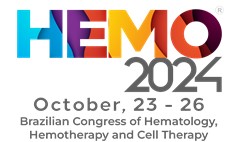
This study aimed to screen Myeloproliferative Neoplasm (MPN) patients for four known genetic mutations following their clinical and bone marrow examinations to establish a diagnosis before treatment.
MethodsThis descriptive cross-sectional study was conducted at the Armed forces bone marrow transplant center, Rawalpindi, between January 2018 and January 2021. A total of 159 MPN patients who fulfilled inclusion criteria were enrolled. All patients underwent bone marrow biopsy after providing informed consent, history recording, and examination. Peripheral blood samples were screened for somatic mutations in JAK2 V617F, JAK2 exon 12, CALR, and cMPL genes. The JAK2 V617F and cMPL mutations were analyzed using conventional PCR, and the PCR products were analyzed on polyacrylamide gel electrophoresis. JAK2 Exon 12 and CALR mutations were analyzed using the fragment analysis technique. Positive and negative controls were run with each sample. The final results were analyzed using Gene Mapper 5 Software (Applied Biosystems). The gene scan data was interpreted by analyzing the electropherograms and the genotyping data sheet. The data were analyzed using the Statistical Package for Social Sciences (SPSS) version 25.0.
ResultsA total of 159 MPN patients fulfilled the inclusion criteria, with 104 (65.4%) males and 55 (34.6%) females. The median age of patients was 54-years (IQR: 38‒64). Among Philadelphia negative (Ph-ive) MPN patients, 69 (43.4%) were diagnosed with Primary Myelofibrosis (PMF), 60 (37.7%) as Polycythemia Vera (PV), and 30 (18.9%) as Essential Thrombocytosis (ET). The frequency of the JAK2 V617F mutation in PV, ET, and PMF patients was 85%, 51.4%, and 34.5%, respectively. CALR mutation was observed only in 1 PMF and 5 (17.2%) ET patients. Additionally, cMPL mutation was not found among our patients. However, 14 (8.8%) patients were triple negative (negative for the JAK2 V617F, CALR, and cMPL mutations).
ConclusionsPMF was the most frequent (43.4%) condition among Ph-ive MPN patients, followed by PV 60 (37.7%) and ET 30 (18.9%). The frequency of JAK2 V617F mutation in PV, ET, and PMF patients was 85%, 51.4%, and 34.5%, respectively. CALR mutation was observed only in 5 (17.2%) ET and 1 PMF patient. These five mutations are among the diagnostic criteria established by the World Health Organization, which enable a quick and reliable diagnosis of MPN.
ConclusionThis study highlights the demographics, diagnosis, and mutations in four genes of MPN patients from a low-income country. PMF was the most frequent (43.4%) among Ph-ive MPN patients, followed by PV 60 (37.7%) and ET 30 (18.9%). The frequency of the JAK2 V617F mutation in PV, ET, and PMF patients was 85%, 51.4%, and 34.5%, respectively. CALR mutation was observed in only 1 PMF and 5 (17.2%) ET patients. These five mutations are among the diagnostic criteria established by WHO for a quick and reliable diagnosis of MPN. Few lines can be included regarding the need of further studies with larger cohort from multi centers Use of high throughput sequencing techniques for identifying mutations located anywhere else in these genes Shouldn’t it be 4?






